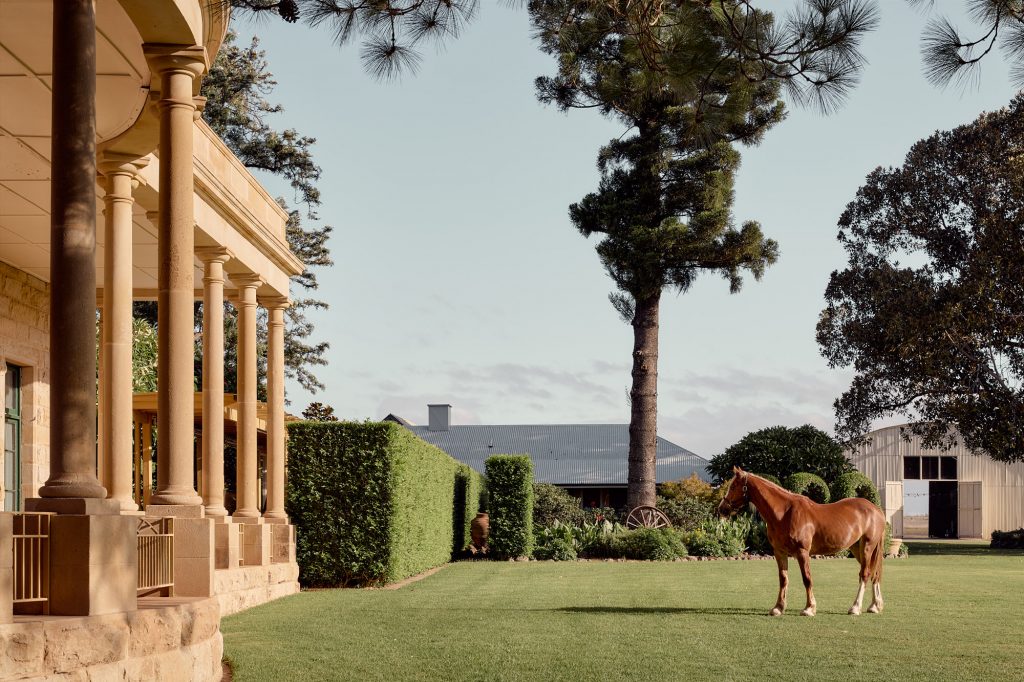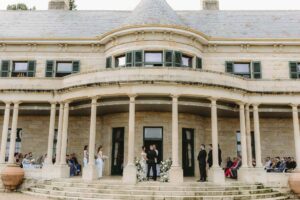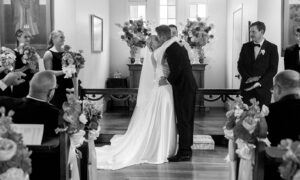Introducing Jimbour House, a truly magnificent piece of Australian History on the Darling Downs in Queensland, about an hour and twenty minutes drive from Toowoomba. A striking home and lush surrounding gardens juxtaposed against the harsh Australian backdrop is the most splendid spot to host your wedding, corporate event, or special occasion.
A grand homestead, Jimbour House came into existence when Thomas Bell, born in Northern Ireland immigrated to Australia in 1829 and purchased the land which would become Jimbour Station in 1844. In 1841 the original owner had established a flock of 11,000 sheep and 700 head of cattle and Jimbour became the first fully stocked station in the Darling Downs, which Thomas owned with his three sons, Joshua Peter, John Alexander, and Marmaduke.
Upon the death of Thomas Bell in 1874, his eldest son, Joshua Peter took over and became manager of the station, and in 1875 he began the ambitious construction of the very grand Jimbour House which would take 2 years to complete and cost approximately $30,000 pounds, which in its day was a huge sum of money. And understandably given the residences 10 bedrooms, opulent chandeliers, decorative moldings and high ceilings.
Joshua Peter went on to have an illustrious career in parliament and held many executive positions during his time. He was knighted in 1879.
Due to a series of disasters, including the passing of Joshua Peter in 1881 and his son, Joshua Thomas in 1911, the Bell Family fortune was lost and Jimbour House was sold in 1912 and fell into decay.
The current owners, the Russell family, became owners of Jimbour House when Wilfred and Millicent Russell purchased it in 1923, ultimately saving the residence from dilapidation and disrepair with extensive renovations to the property, which returned the grand home to its former glory, including landscaping the exterior grounds.
Wilfred and Millicent had five children, Muriel Frances, Joan Millicent, Henry Edward, Charles Wilfred, and Eileen Marian.
Under Charles’ management after the death of his father, Jimbour thrived agriculturally even throughout the Great Depression. Charles would go on to be a member of State Parliament in 1947, and then Federal Parliament in 1949 until 1951.
After Charles’ death in 1977, Hillary would go on to care for Jimbour House for the next 20 years. Aware of the cultural and historical significance of the property, Hillary shared Jimbour House with the Arts Council which ensured the public were able to experience the grandeur of the residence and surrounding gardens.
Today, Charles and Hillary’s son, David carries on the Jimbour legacy, opening the home for private and corporate events, tours, and recreational activities, such as tennis, swimming boules or croquet.
Want to know more about the history of Jimbour House? Please join us for one of our guided tours.



